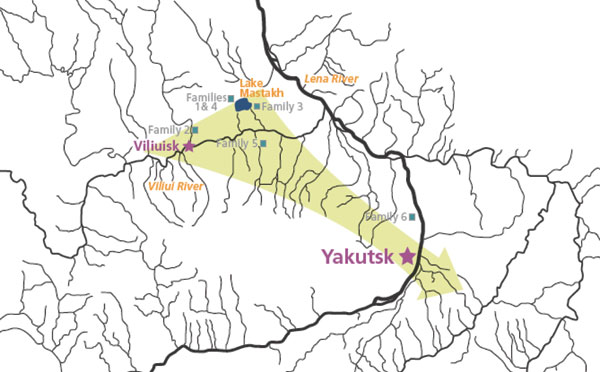Volume 13, Number 9—September 2007
Research
Family Clustering of Viliuisk Encephalomyelitis in Traditional and New Geographic Regions
Figure

Figure. Location of families with Viliuisk encephalomyelitis characterized in this report. Arrow indicates the general direction of Viliuisk encephalomyelitis dispersion from traditional disease-endemic areas on the Viliui River to densely populated regions of the Sakha (Yakut) Republic around the capital city of Yakutsk.
Page created: July 01, 2010
Page updated: July 01, 2010
Page reviewed: July 01, 2010
The conclusions, findings, and opinions expressed by authors contributing to this journal do not necessarily reflect the official position of the U.S. Department of Health and Human Services, the Public Health Service, the Centers for Disease Control and Prevention, or the authors' affiliated institutions. Use of trade names is for identification only and does not imply endorsement by any of the groups named above.